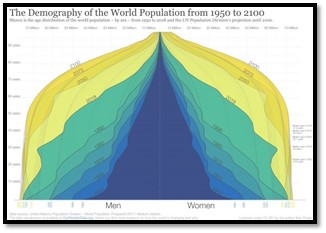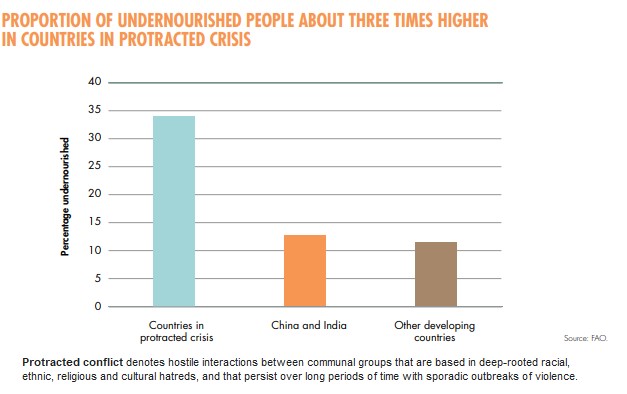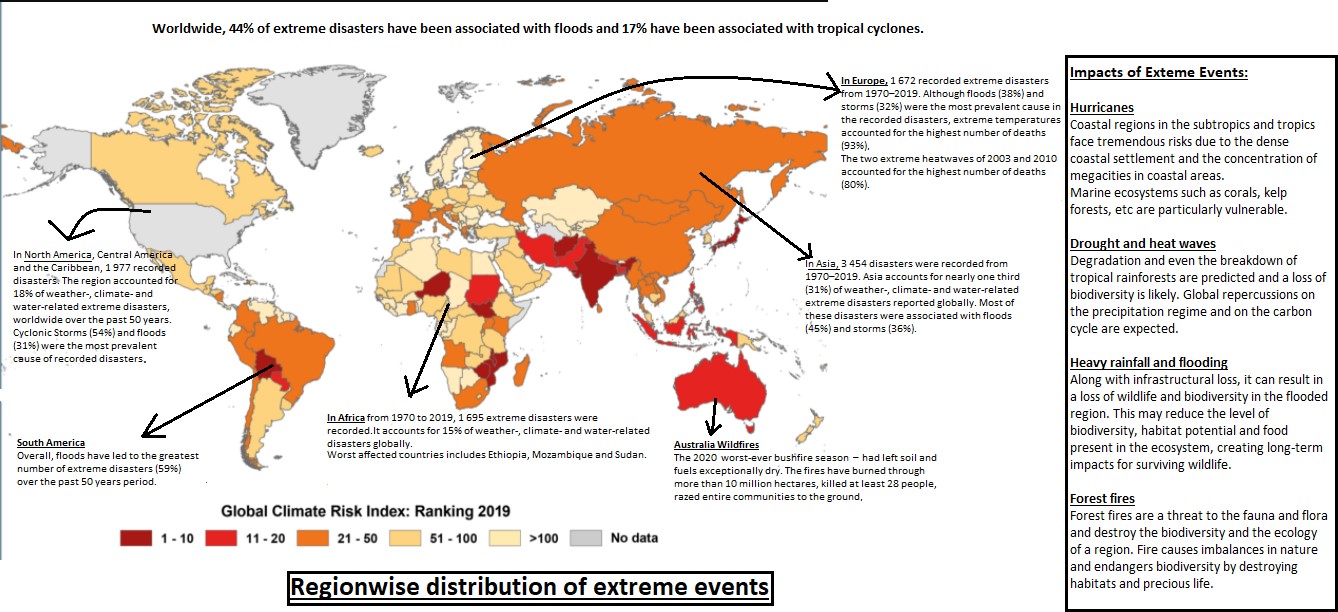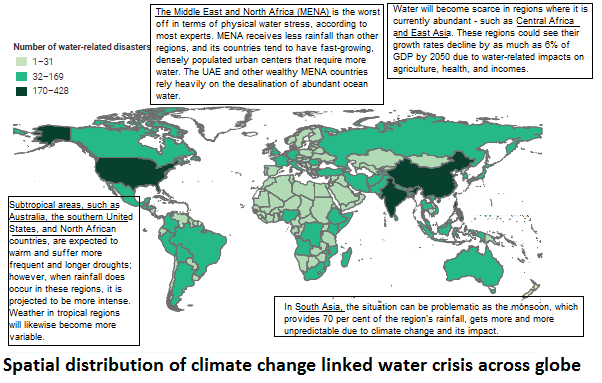04 Dec
Improving sex ratio's & widening gender inequalities- paradox which has remained unresolved
- In news: As per NFHS 5 report, conducted between 2019-21, there are 1,020 adult women per 1,000 men.
- Background:
- This is the first time the sex ratio has tipped in favour of females. It is also a marked improvement from the NFHS-4 survey of 2015-16.
- The sex ratio at birth, for children born in the past five years (child sex ratio), stands at 929 females for every 1,000 males, according to the survey—a slight improvement from 919 in 2015-16.
- It is cautioned that the survey may not completely represent the gender balance in India- as discrimination against women and girls is a complex, pervasive and long-running phenomenon that characterizes Indian society at every level.
- Despite improving sex ratio, gender disparities persist against a backdrop of development: rates of violence against women are still high, low female labour participation rate and discriminatory inheritance practices continue.
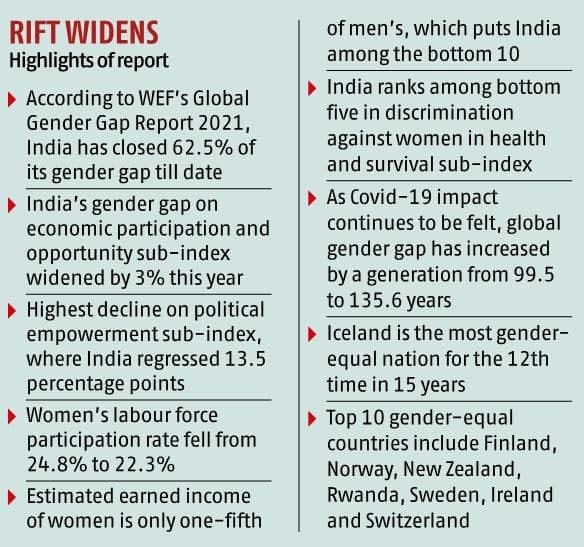
- Regional perspective in sex ratio- overall and at birth
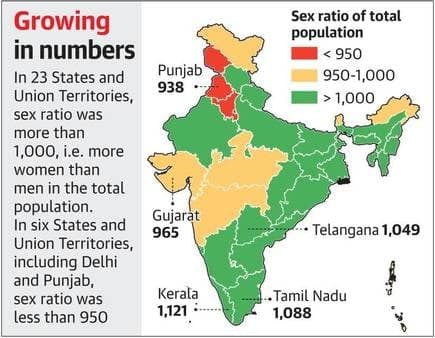
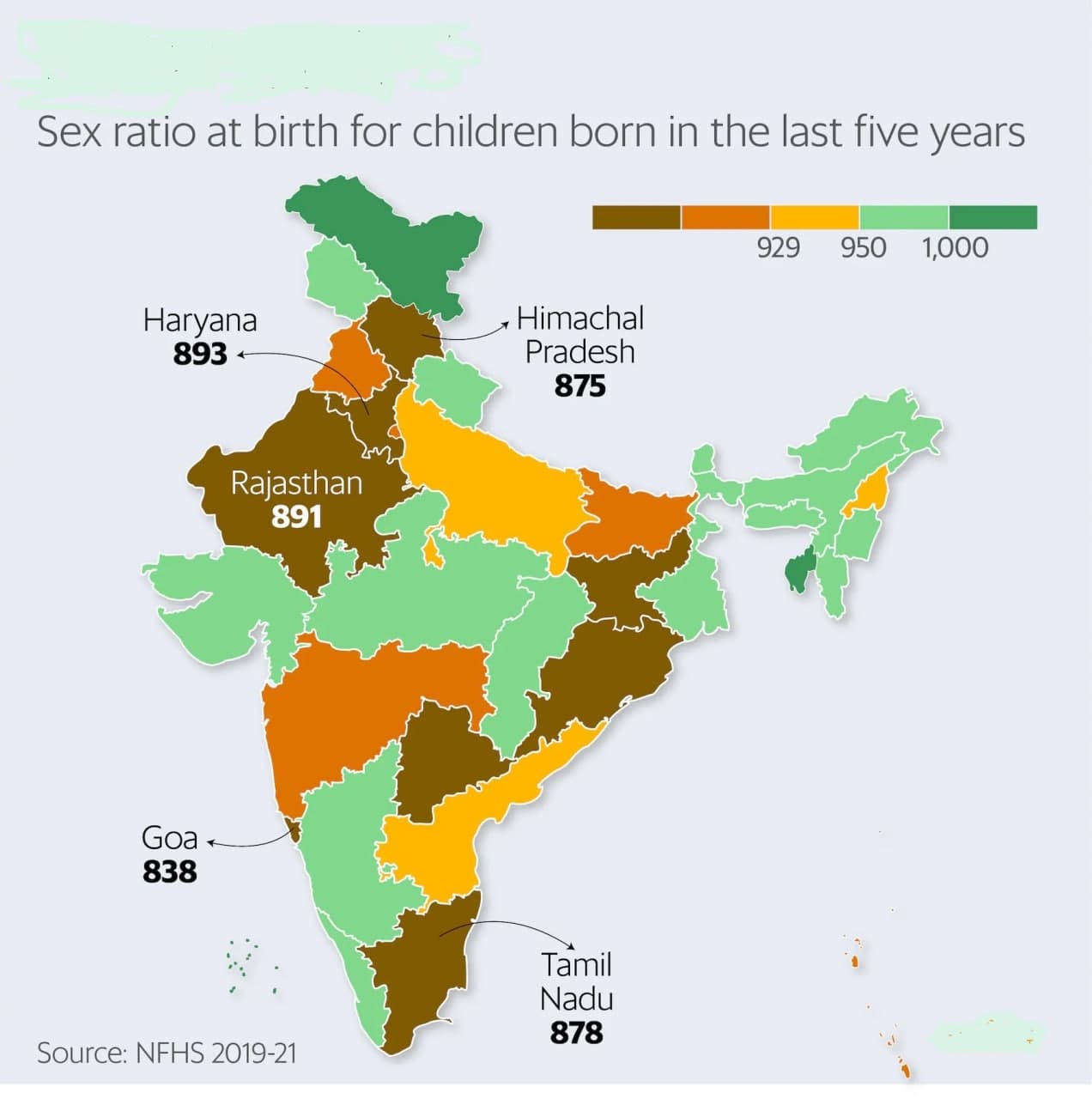
As many as 30 out of 36 states and Union territories showed improved sex ratios from 2015-16; 23 states reported sex ratio greater than 1,000 in the latest NFHS study. Despite improvement in sex ratio, there is a significant regional disparity as witnessed in gaps between north and south states, with southern states being the leaders and north-western states being the laggards.
- Reason behind improved sex ratio:
- Positive impact of measures like implementation of the PC and PNDT Act and various other interventions.
- India is marching towards achieving universal institutional births : According to NFHS-5, 88.6 per cent of the births (in the 5 years before the survey) in the country were delivered in a health facility.
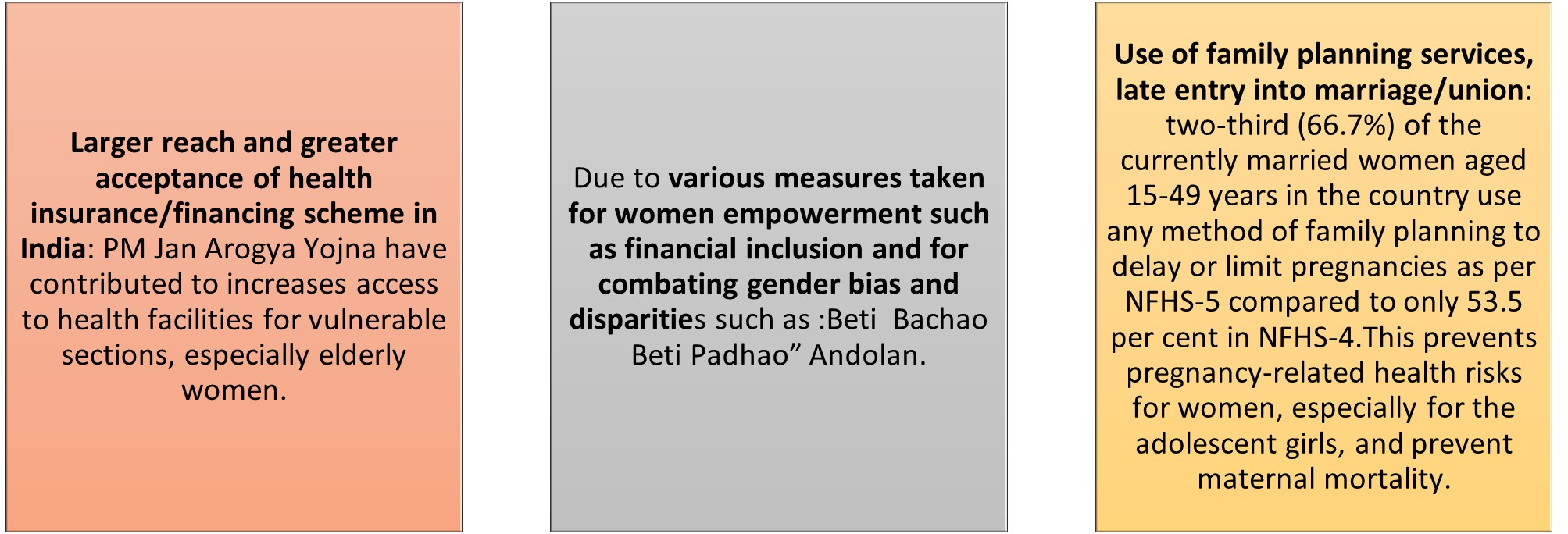
Case study: Jharkhand- improvement in sex ratio in State
In Jharkhand the sex ratio is better than national average- the number of females per thousand males has gone up to 1050.
- In rural areas, the number of women per thousand men has increased to 1070, while in urban areas this figure is 989.
- The survey has also shown the effect of Beti Bachao- Beti Padhao campaign in Jharkhand.
- The survey pointed out indicators showing improvements in the health and social sector of women as well. Marriage of girls under the age of 18 has declined from 37.9 per cent to 32.2.
- The family planning measures is gaining momentum in Jharkhand: in 2020-21, 61.70 per cent of couples adopted family planning, compared to 40.4 per cent earlier.
- As per the survey, 64.50 per cent of girls (above six years of age) went to school and 75.80 per cent of women preferring delivery of child in hospitals.
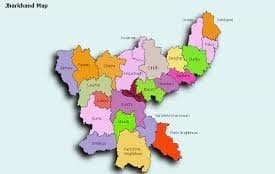
- Widening gender inequality despite improving sex ratio:
India dropped 28 positions to rank 140 out of 156 countries in the gender gap index, reported by the World Economic Forum. The world's largest democracy is one of the worst performers in South Asia, falling behind even countries like Bangladesh, Nepal, Bhutan, Sri Lanka and Myanmar.
Gender disparity and inequality is a complex and multidimensional phenomena. It is not limited to the sex ratio as fertility, the practice of family planning, reproductive health, nutrition alongside other such denominators of overall public welfare play an equal role. This includes:
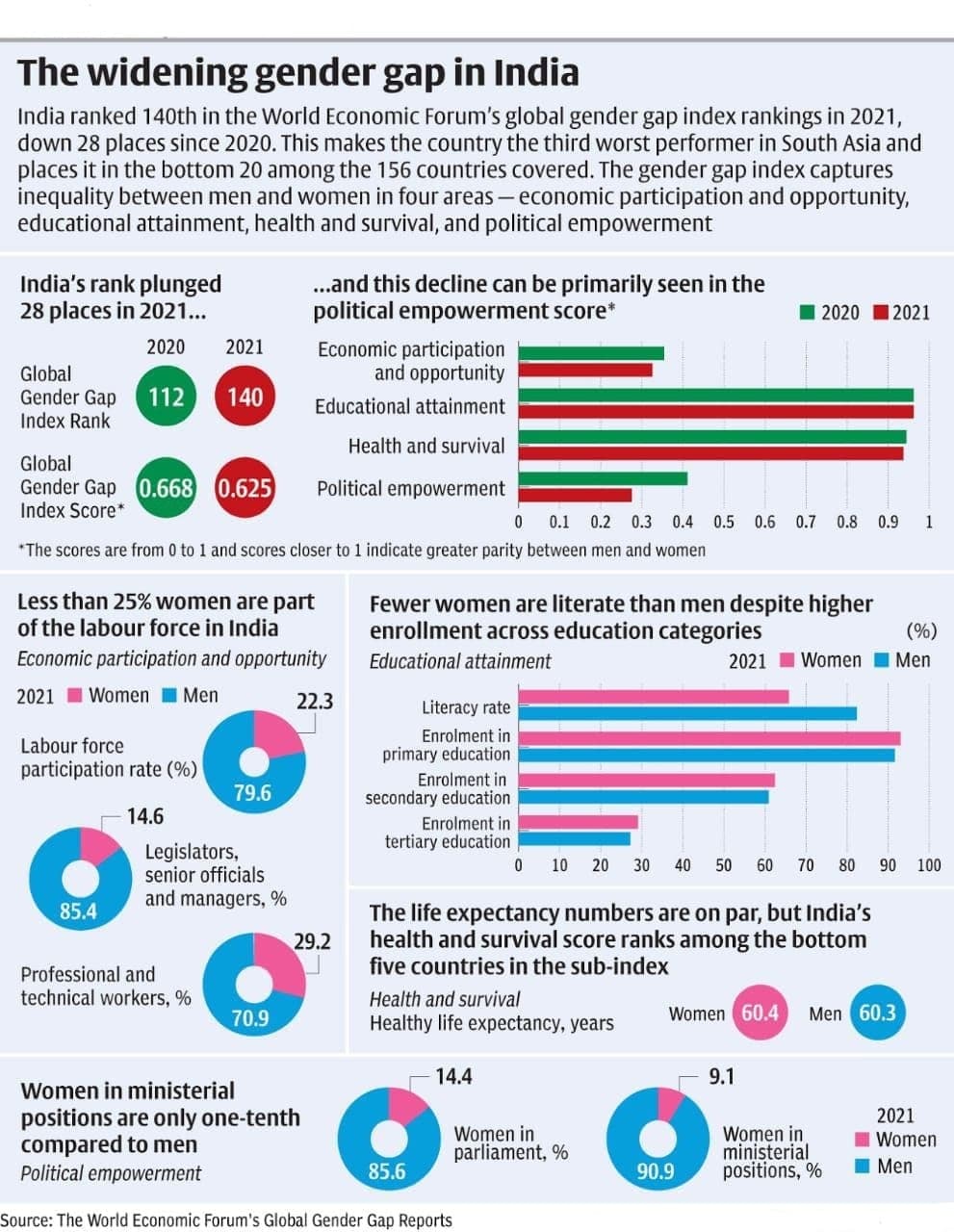
-
- Increasing feminization of poverty:
- In India of the total 30 percent people who are below poverty line, 70 percent are women.
- Women’s poverty in India is directly related to the absence of economic opportunities and autonomy, lack of access to economic resources including credit , land ownership and inheritance, lack of access to education and support services and their minimal participation in the decision making process.
- Also poverty stands at the root of gender discrimination in our patriarchal society and this economic dependence on the male counterpart is itself a cause of gender disparity.
- Increasing feminization of poverty:
-
- Persisting Illiteracy among females: There are approximately 960 million illiterate adults of whom two thirds are women. The progress towards education by girls is very slow and gender disparities persist at primary, upper primary and secondary stage of education. Girl’s account for only 43.7% of enrolment at primary level, 40 .9 % at upper primary level, 38.6% at secondary level and 36.9% at degree and above level. They are not able to realize full identity and power in all spheres of life only due to illiteracy.
-
- Lack of Employment Facilities: In both rural and urban India, women spend a large proportion of time on unpaid home sustaining work. Women are not able to respond to new opportunities and shift to new occupations because their mobility tends to be low due to intra-house hold allocation of responsibilities. In addition child bearing has clear implications for labour force participation by women. Time spent in bearing and rearing of children often results in de-Skilling, termination of long term labor
Example: India has slipped on the labour force participation rate (LFPR) of females above 15 years despite an improving sex ratio. From 38% in 2001, LFPR of females has fallen to 26% in 2020, as per World Bank data. This fares poorly against 78% LFPR of males in India. A key reason for this gap is a higher participation rate for Indian women, than for men, in unpaid domestic duties. For India to shed its “Missing Women" tag, it must invest in policies to ensure women are not missing in the workforce.
-
- Cultural traditions dictate that women are the first to experience hunger when resources are in short supply — even in normal times, Indian women consume nutrient-rich foods less frequently than men. Short-term malnutrition can lead to permanent exclusion from the labour market and government workfare schemes, contributing to a new cycle of poverty among working-class women.
-
- The coronavirus pandemic has inevitably affected the graph of gender gap, especially women's participation in the workforce negatively. About 10 million people lost their jobs in May this year, according to the CMIE. McKinsey estimates that female job loss rates have been about 1.8 times higher than for males globally.
- The return of male migrant labourers from towns and cities also means a further reduction in economic opportunities for rural women. This includes both private agricultural jobs and social protection schemes such as the Mahatma Gandhi National Rural Employment Guarantee Act (MGNREGA).
- The coronavirus pandemic has inevitably affected the graph of gender gap, especially women's participation in the workforce negatively. About 10 million people lost their jobs in May this year, according to the CMIE. McKinsey estimates that female job loss rates have been about 1.8 times higher than for males globally.
Case study: State of paradox- Missing women in Tamil Nadu’s political landscape
Despite the sex ratio of 1088, political representation of women in the state assembly is woefully short. While rural and urban local governments have 50% women due to reservation of seats, the state has only ever had a single digit percentage of female MLAs since 1962, except in two assemblies — 1991 (14%) and 2001 (11%).

Way forward:
- Welfare approach to women issues: This is based on Non-discrimination, Ecological parity and well-being, Social justice, Equal status to women, with an aim to seek equanimous positions for all human beings with the good physical quality of life, distributive justice, protection of their natural life i.e. an egalitarian Society.
- Feminist geography approach aim to incorporate positions of race, class, ability, and sexuality into the study of geography to deal with Planning and developmental issues.
- Providing equal financial, educational and social resource access like education, digital literacy, credit/financial resources etc.
Example: Countries in South America has provisions of cash incentive to women in case of delivery and child education.
In India, Pradhan Mantri Matru Vandana Yojana (PMMVY) is a Maternity Benefit Program - providing partial compensation for the wage loss in terms of cash incentives.
- Policy support to generate employment in women dominant sectors like manufacturing, care economy, etc.
- Where it can be used
- Geography
P1 - perspective in human geography, Economic geo, population geo, regional planning.
P2- cultural setting, regional development, contemporary issues
- GS- GS1( society), GS2, GS3
Links:
- Climate change, gender equality and SRHR- all parts of the same puzzle
- Achieving Gender Equality in India: What Works, and What Doesn’t
- Despite govt schemes, NFHS-5 says Odisha’s child sex ratio is dropping
- National Family Health Survey says women outnumber men
- India now has more women than men but sex ratio at birth still low
- India finally has more women than men
Seaweed Cultivation- Prospects, Significance & Challenges in India
Why in news: India is aiming to increase seaweed production in the country to 11.5 lakh tonnes from the current production levels of 2,500 tonnes in the next five years.

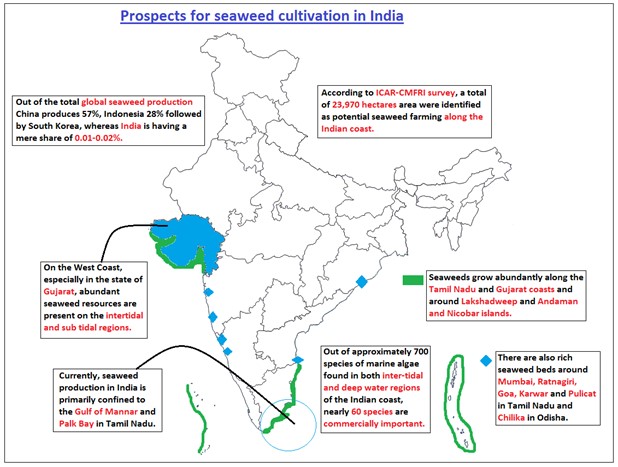
Significance of seaweed cultivation:
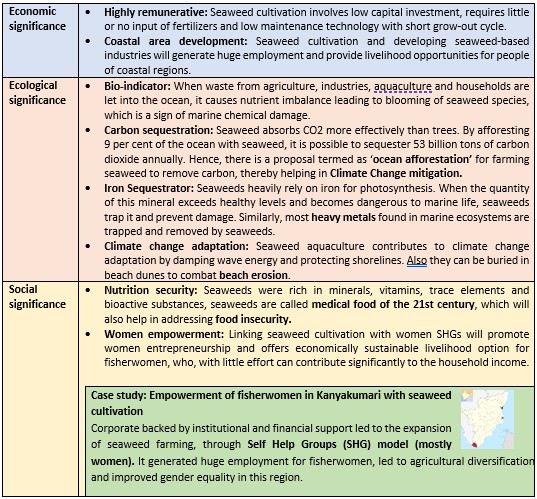
Several challenges associated with seaweed cultivation in India:
- Expansion of seaweed cultivation grounds is a major constraint due to water use conflicts with fish landing centers and commercial fishing activities.
- Eutrophication due to human sewage rich in phosphate and nitrate from major municipalities and small towns has negative impacts on seaweed growth.
- Run-off from land-based agriculture, thermal power plants and chemical factories inundates near-shore waters and contributes to commercial cultivation challenges.
- Rising sea surface temperatures (SST) due to climate change inhibits the growth of seaweed species.
- Monsoonal periods in India are associated with occasional occurrence of cyclones and create high seawater turbulence and high tidal fluctuations. Cultivation during this period is restricted to seed bank preservation
- Other challenges such as labour shortages during the paddy harvesting & transplanting season, lack of technology to improve processed products and besides India having rich source of seaweed varieties, we have focused only on harvesting, not cultivation thus leading to over-exploitation.
Way forward:
- IPCC’s special report on the Ocean and Cryosphere in a Changing Climate highlighted that Investing in nature-based actions and seaweed farming as one of the five opportunities to make the Ocean part of the solution to climate change.
- TIFAC has launched Seaweed Mission with an objective of promoting commercial farming of seaweeds and it’s processing for value addition towards boosting our blue economy.
Where it can be used?
It can be used in topics related to Paper 1 (Climate change, Marine pollution), Paper 2 (Aqua-culture, Coastal area development) and GS 3 (Agriculture).
Sources:
Strategic importance of ‘Free and Open Indo-Pacific’ (FOIP) for India
Indo Pacific- the evolution and rise of strategic Rimland
- Indo-Pacific is a term coined early this century to refer to the geostrategic space that stretches from Africa’s east coast till America’s west coast. It encompasses the Indian and the Pacific Oceans.
- The interests of many players are engaged in the Indo-Pacific region: India, Japan, France, and the United States, as well as medium and smaller powers like Australia, Indonesia, and South Africa; there are stakeholders from beyond the region, too.
- In recent years, uncertainty has heightened in the region owing to China’s territorial expansionist agenda, concerns for the United States long-term commitment to Asia, as well as the limitations of existing multilateral institutions. Indeed, the Indo-Pacific is emerging as the new and expanded theatre of great-power contestation.
The strategic importance of ‘Free and Open Indo-Pacific’ (FOIP) for India
According to geopolitical thought of Nicholas J. Spykman, “Geography is the most fundamental factor in the foreign policy of states” because it is the most permanent. Even more than the size of a state, it is location, both in the world and in a particular region that is important. Coastal territories or “rimland” have the advantage because of the population, resources and access to sea. India has a central location in the Indo-pacific thus having obvious strategic interests.

For these reasons, India has always envisioned a free, open and inclusive order in the Indo-Pacific, based upon respect for sovereignty and territorial integrity of all nations, peaceful resolution of disputes through dialogue and adherence to international rules and laws.
The strategic importance of FOIP for India rests on seven central pillars conceived around Maritime Security; Maritime Ecology; Maritime Resources; Capacity Building and Resource Sharing; Disaster Risk Reduction and Management; Science, Technology and Academic Cooperation; and Trade Connectivity and Maritime Transport.
The Prominent key interests are discussed below
- Maritime Security: These challenges are multi-faceted: sea-borne terrorism; piracy in the waters of the Indian Ocean, Sulu Sea, and SCS; climate change; natural and man-made disasters; illegal, unreported, and unregulated (IUU) fishing; and maritime disputes and flashpoints like the South China Sea (SCS).
- Over 90% of global trade is conducted through the maritime route, with a value that has grown from US$6 trillion to about US$20 trillion in 15 years. Strategic stability in the Indo-Pacific thus depends on the ability to reap economic benefits from the oceans and to respond to the challenges therein.
- The China Challenge: China has been aggressively pursuing its sovereignty claims. It is working to establish itself as a major regional player by employing initiatives such as the Belt and Road Initiative (BRI) and the Asian Infrastructure Investment Bank (AIIB), as well as by adopting assertive security policies towards its neighbours.
- China’s ambitious military plans and its border skirmishes with New Delhi have forced India to recalibrate its China policy and envision a greater role for itself in the Indo-Pacific region.
- Of late, India has viewed the Western Pacific as falling within the ambit of its maritime security interests. The focus on maritime issues is evident from the increase in maritime exchanges led by the Indian Navy, with countries such as Vietnam, Singapore, Indonesia, and Japan. This also reflects in India’s association with the QUAD along with US, Japan and Australia.
- Maritime Ecology: Blue Economy is increasingly being recognised as an important dimension to future sustainable development of oceans and their resources. However, resource exploitation, human-induced habitat degradation, and other form of anthropogenic activities and the effects of climate change have contributed to the drastic plunge in ocean health and ecosystem. One example is the Great Pacific Garbage Patch and dead zones.
- Maritime Resources: The blue economy has a 4.1% share in India’s GDP, with immense potential for growth. Oil and gas, deep-sea mining (exploration of rare earth metals, hydrocarbons) led by rising demand and use of these critical minerals in advanced applications necessitate the India’s interests in Indo Pacific.
- India has vast exclusive economic zone (EEZ) and has already secured the deep seabed mining rights in Indian Ocean from the International Seabed Authority.
- Maritime Connectivity: Connectivity and proper port infrastructure is the bedrock of maritime trade, shipping, and maritime transport.
Through its Sagarmala project, India is upgrading its physical infrastructure, digitization process, adjusting its regulatory measures to overhaul the port infrastructure and operations in the country.
- Maritime Trade: India has wider stakes in South China Sea as nearly 55% of India’s trade with the Indo-Pacific region passes through these waters. India’s trade with select Indo-Pacific economies increased eight times over the last 19 years, reaching $262 billion in 2020 from $33 billion in 2001, with the US being the largest trade partner with a dominant share of 29% in 2020.
- Indian Ocean focus: While the Himalayas have recently become increasingly strategically active, a secure Indian Ocean is also critical for India. Approximately 90% of both Indian trade by volume and India’s oil imports pass through the area, and it has been an entry point for terrorist infiltrators, most notably during the 2008 Mumbai attacks. The increased Chinese maritime activity in the region is often seen as dual use, such as Chinese military activity at the ‘commercial’ Gwadar port in Pakistan.
- The Western Indian Ocean Region (WIOR) as a region of primary interest: The region’s rich natural resource profile, estimated to be worth at least US$333.8 billion, has generated interest amongst the bigger world economies. For India, the region is part of its strategic maritime frontier which extends from the Persian Gulf, to the East coast of Africa, and across the Malacca Strait.
- Significant traffic of container shipping transits the region and is home to some of the most vital and strategic maritime chokepoints such as Gulf of Aden, Bab-el-Mandeb, Mozambique Channel, Strait of Hormuz, and Cape of Good Hope.
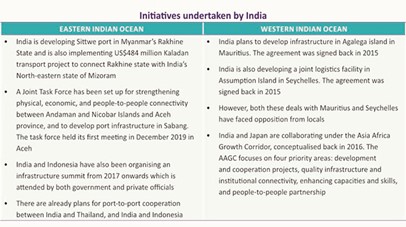
Measures Taken
- To promote its strategic interests in the Indian Ocean, India launched the SAGAR vision in 2015.
- Given the increasing salience of the Indo-Pacific concept in global discourse, the Ministry of External Affairs established a new Division for the Indo-Pacific in April 2019.Indo-Pacific Division deals with matters relating to the Indo-Pacific, India-ASEAN relations, East Asia Summit, Indian Ocean Rim Association (IORA), Asia-Europe Meeting (ASEM), Mekong-Ganga Cooperation (MGC) and Ayeyawady-Chao Phraya-Mekong Economic Cooperation Strategy (ACMECS).
- In 2019, Prime Minister launched the IndoPacific Oceans’ Initiative (IPOI) at the East Asia Summit. The main objective of the IPOI is to ensure the safety, security, and stability of the maritime domain.
Sources:
Earthquake swarms
Earthquake swarms are sequences of many earthquakes without a specific main shock. Swarms are usually short-lived, but they can continue for days, weeks, or sometimes even months. They often recur at the same locations. Swarms are often, but not always, associated with volcanic or geothermal activity and can recur in the same locations.
Impact of EQ Swarms:
- Each earthquake within the swarm redistributes stress, which may in turn influence the subsequent swarm evolution, especially if the crust is in a critical state.
- Slider-block models have shown that earthquake swarms can result from a self-organized critical stress field without any external pore pressure source which can cause damage.
- Earthquake swarm activity also shares some common features with tectonic earthquake clusters, in particular embedded aftershock sequences which point to an important role for stress triggering collapse of structures.
- The potential for destruction from these events varies widely. Some cause considerable amount of damage but others are relatively harmless.

Fig 1: comparison of Earthquake Swarms with a normal Earthquake event

Mission Turmeric
Why in news? A former naval officer C V Prakash who is an expert in soil-less agriculture has been carrying out campaign, ‘Mission Turmeric 2021’.
Mission Turmeric - to begin an “orange revolution” by teaching people to cultivate turmeric in shade houses in grow bags (large porous containers made of high density polyethylene) packed with coco-peat (made from the pith of the coconut husk) instead of soil (soil-less agriculture) and increase exports. The method resulted in better yield with higher Curcumin (a bright yellow phenolic compound in Turmeric known for its potential to fight cancer.) content.
Potential of Mission Turmeric:
- It promotes the importance of science in horticulture, promotes soil-less agriculture, thus augmenting farmer’s income and promoting technology in farming.
- It can meet the demand from pharmaceutical companies for high Curcumin turmeric (which has risen to 58% of the global market share in recent years).
- The North-Eastern states have huge potential for turmeric farming and can be tapped to yield results; it would thus also promote processing industries in such regions.
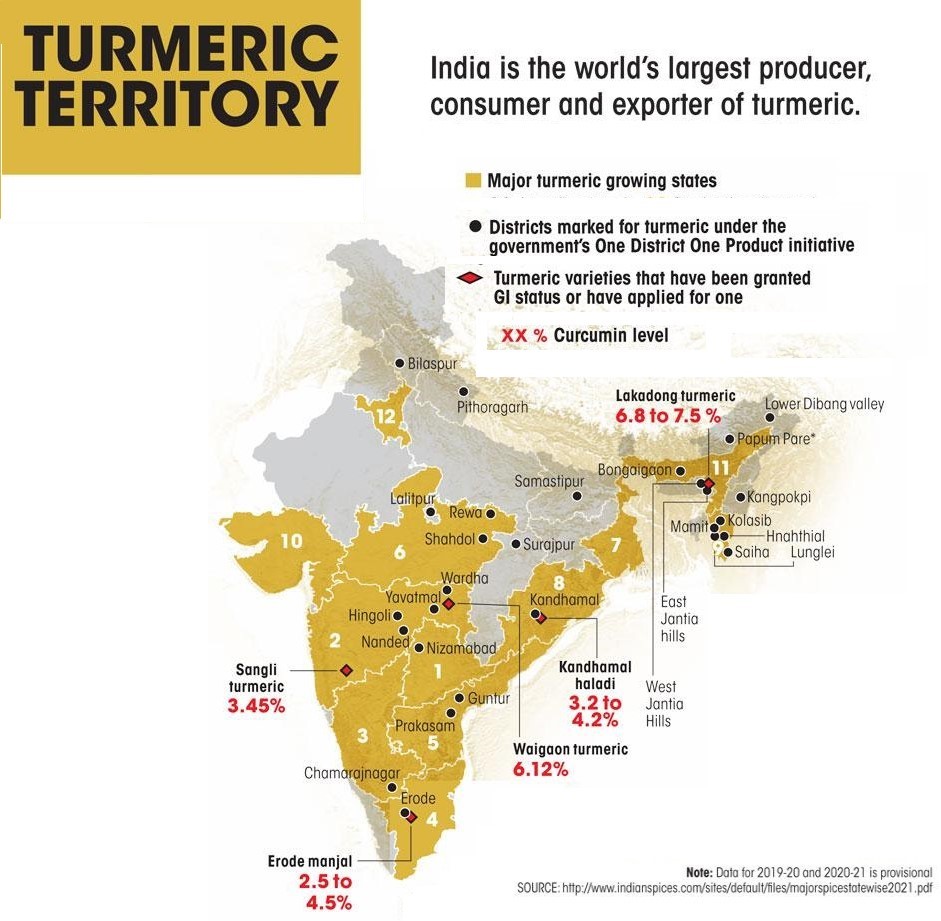
Do you know? - In soil-less agriculture, such as hydroponics, micro and macro nutrients that have been pre-mixed into a water reservoir, along with high levels of oxygen, are delivered efficiently to the plant roots.

Sinkholes
Why in News? - Thousands of sinkholes were witnessed around the Dead Sea recently, the landlocked salt lake between Israel and Jordan.
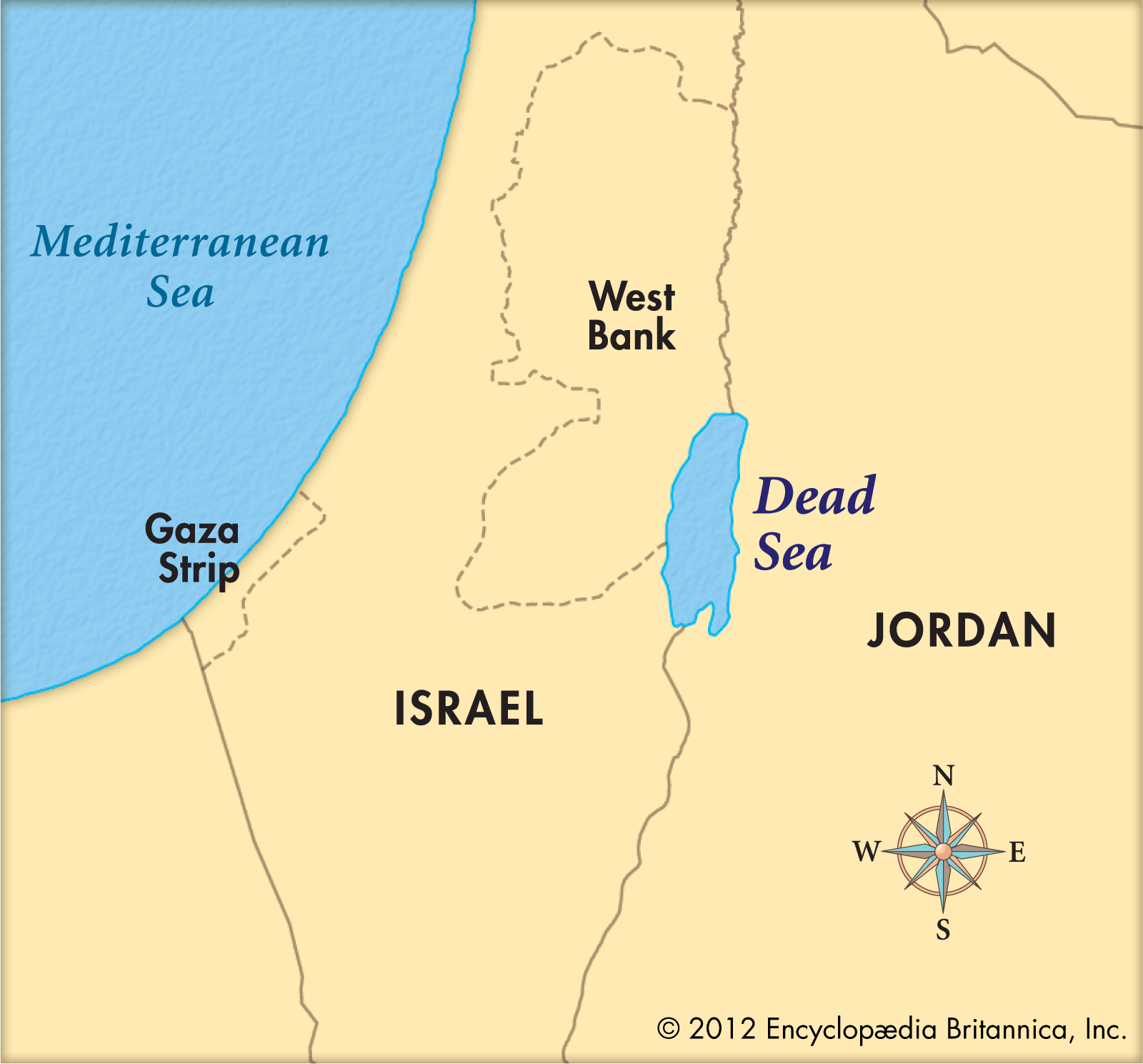
A sinkhole is a depression in the ground that is formed when water erodes an underling rock layer. Sinkholes are most common in karst terrain. They can occur suddenly and without warning, because the land under the surface of the Earth can stay intact for a period of time until the spaces get too big.
Examples - In China, the mining of coal, zinc, lead and iron ore deposits in karst areas have been associated with the formation of sinkholes due to human activity.Other sinkhole-prone areas around the world include Mexico, parts of Italy and Russia. In 2010, a three-story building was swallowed by a sinkhole in Guatemala City. This was attributed to leakages from sewer pipes and a volcanic eruption.
Factors contributing to Sinkholes - they can be natural; Drought, along with resulting high groundwater withdrawals, can make conditions favorable for sinkholes to form. Also, heavy rains after droughts often cause enough pressure on the ground to create sinkholes. Or anthropogenic; over withdrawal of groundwater, diverting surface water from a large area and concentrating it in a single point, artificially creating ponds of surface water, Drilling new water wells etc. Figure 1 shows the process of formation of sinkholes.
Prevention and mitigation? - keeping water tables high, water conservation rules and drought restrictions tools in place to help prevent sinkholes from occurring.
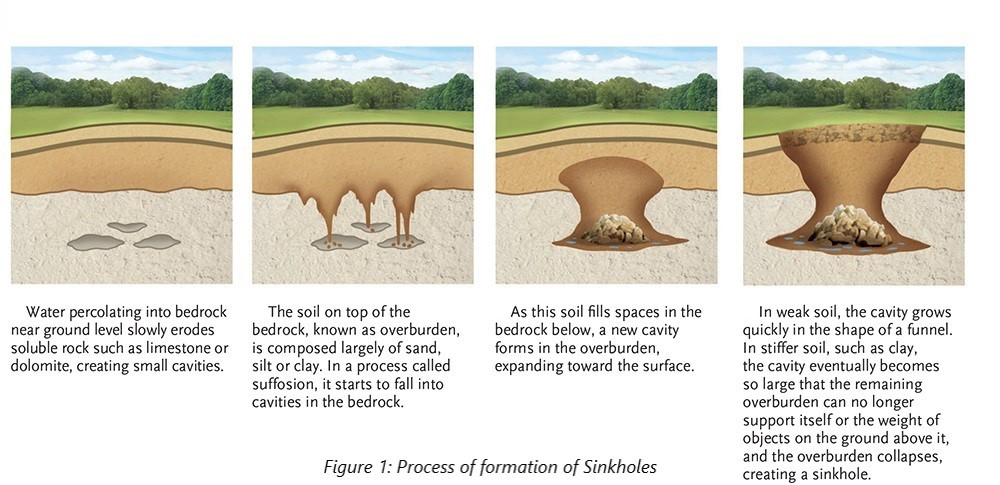
Source
- https://www.thehindu.com/sci-tech/energy-and-environment/watch-dangerous-sinkholes-form-around-receding-dead-sea/article37677954.ece
- https://www.usgs.gov/faqs/what-a-sinkhole#:~:text=A%20sinkhole%20is%20a%20depression,typically%20drains%20into%20the%20subsurface.&text=Florida%2C%20for%20instance%2C%20is%20an,is%20highly%20susceptible%20to%20sinkholes.
Sustainable development of PVTGs in Kerala’s Karuvannur river basin
Sustainable development of PVTGs in Kerala’s Karuvannur river basin
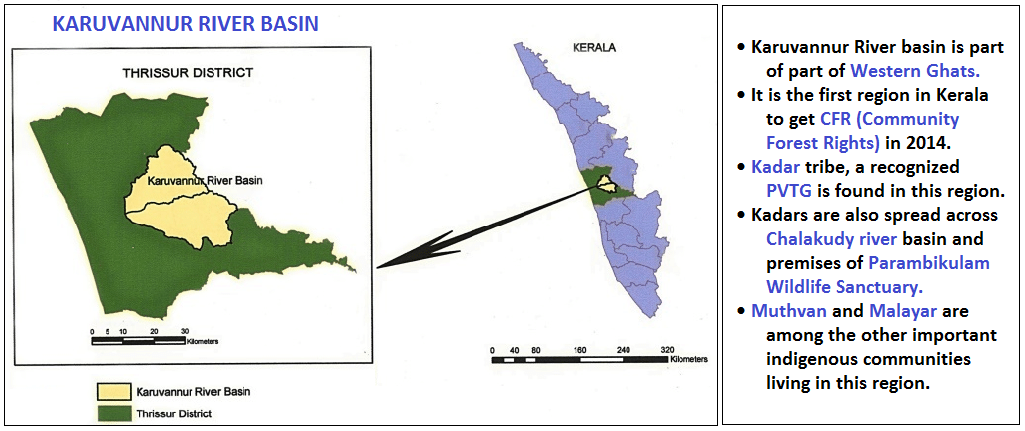

Initiatives taken for the sustainable development of Kadar Tribe:
- River Research Center (RRC) of Thrissur district initiated a project to involve indigenous women’s groups to form forest-based enterprises, and develop food and lifestyle products. And it also involves the collection of Non-timber forest products (NTFPs) by indigenous communities and creating value added products for the effective utilization of CFRs.
- Outcomes: stable source of income for tribes (especially tribal women), increased employment, reduce out-migration and women empowerment, reduced gender inequalities.
- Forest Post was founded in 2017 to help create livelihood opportunities based on the knowledge and wisdom of these indigenous communities. Forest Post is a network of minor forest produce harvesters and makers of handmade goods including beeswax, oils, bamboo baskets, and cloth bags. Also, forest post received empanelment from TRIFED in 2020 to sell the products through their e-commerce platform.
- Outcomes: Wider market coverage for tribal products, forest conservation as the tribal population continue to engage with forests and their resources.
- By invoking CFRs under FRA 2006, Kadar tribe stood against the controversial Athirapally hydroelectric project which was supposed to destroy the habitat of endangered Great Hornbill & they took several measures for the bird’s conservation.
Where it can be used?
It can be used in topics related to Paper 1 (Ecosystem Conservation, Sustainable development), Paper 2 (Agriculture, Tribal area development) and GS 1 (Social Empowerment).
Sources:
Places in news
|
Birbhum
|
|
Anamalai Tiger Reserve (ATR)
|
|
Balaghat
|
|
Kongthong Village
|
|
Polavaram Multipurpose Project
|
|
Jaitapur
|
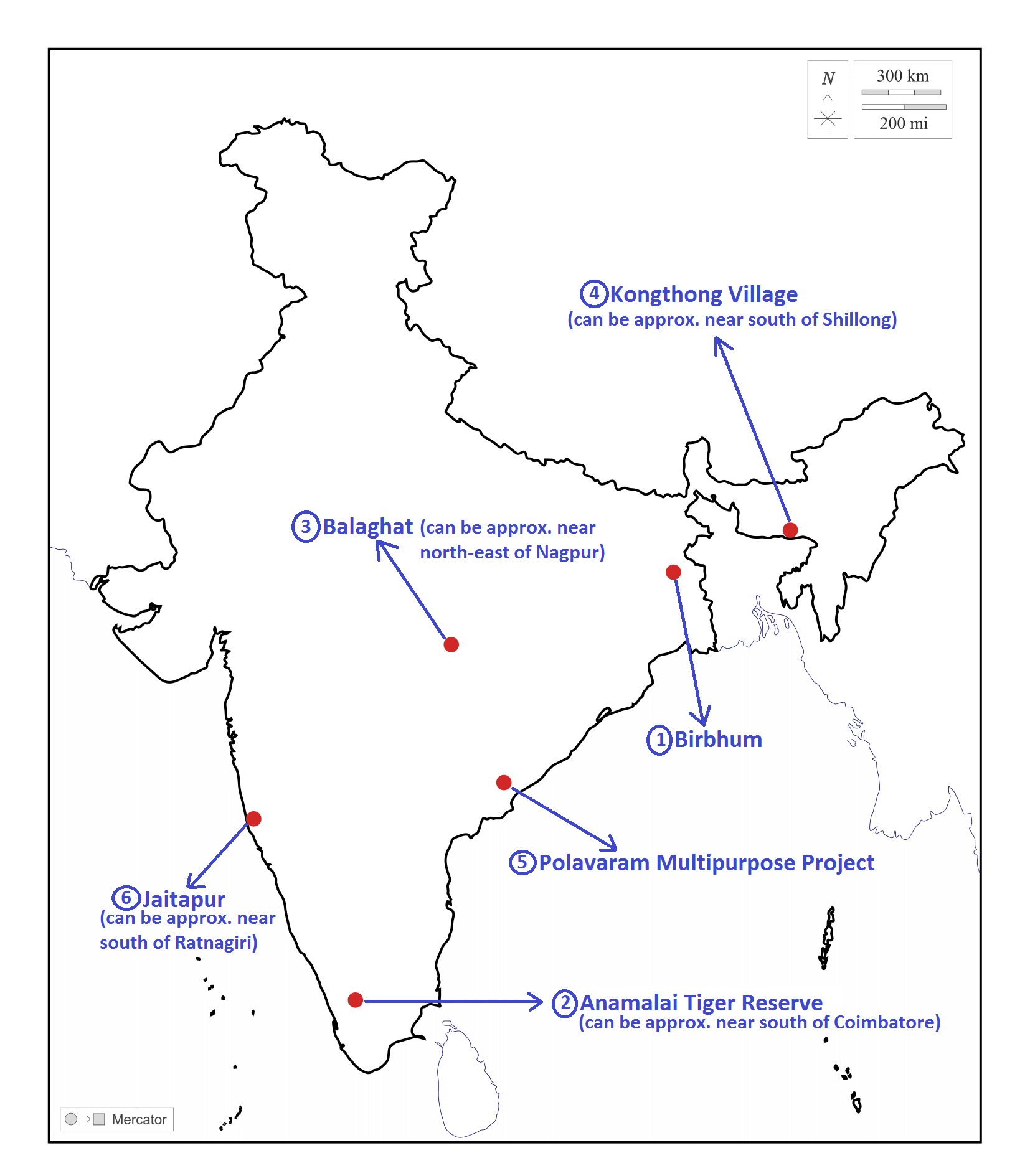
Share the article
Get Latest Updates on Offers, Event dates, and free Mentorship sessions.

Get in touch with our Expert Academic Counsellors 👋
FAQs
Geography Current Affairs focuses on the contemporary issues, events, and developments in the field of geography. It covers recent geographical phenomena, environmental changes, geopolitical shifts, and related news. This differs from regular geography studies which may focus more on foundational concepts, historical contexts, and theoretical frameworks.
Updates are provided regularly to ensure that subscribers stay informed about the latest developments in geography. Typically, updates are provided on a fortnightly basis, depending on the frequency of significant events and changes in the field.
Absolutely. Geography Current Affairs serves as a valuable resource not only for Geography optional but also for GS papers, especially GS Paper 1 (covering Indian Heritage and Culture, History, and Geography of the World and Society) and GS Paper 3 (covering Technology, Economic Development, Biodiversity, Environment, Security, and Disaster Management). It aids in building a holistic understanding of various topics and strengthens answer-writing skills by incorporating contemporary examples and perspectives.
Geography Current Affairs holds immense importance for UPSC preparation, particularly for aspirants opting for Geography optional. It helps candidates stay updated with the latest developments, geographical phenomena, environmental issues, and geopolitical shifts worldwide, aligning them with the dynamic nature of the subject as tested in the UPSC examinations.

